The color of an animal can determine whether it lives or dies. If it’s easily spotted by predators, it may well become a meal. Hidden nicely against its background, an animal can escape its enemies for another day.
The particular colors on an animals are determined partly by the genes its gets from its parents. That means that genes that hide animals can spread thanks to natural selection, leading to the evolution of exquisite camouflage. But that’s not to say that the animal kingdom has settled on a perfect, fixed palette. You can find mismatched individuals. Over the course of generations, a whole population can flicker between mismatched and well-matched.
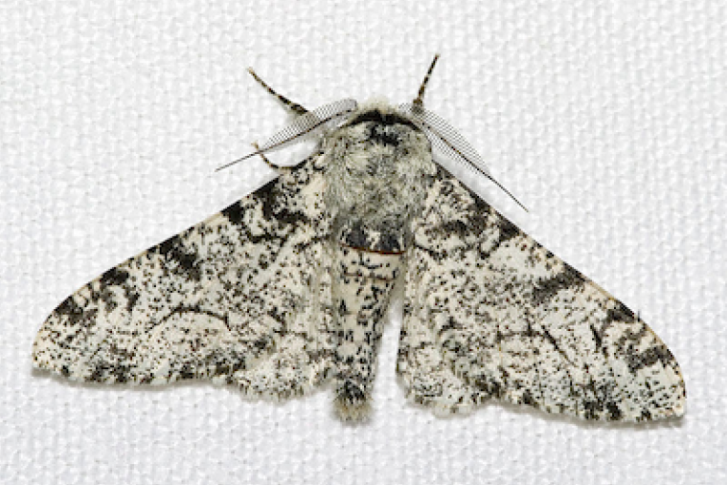
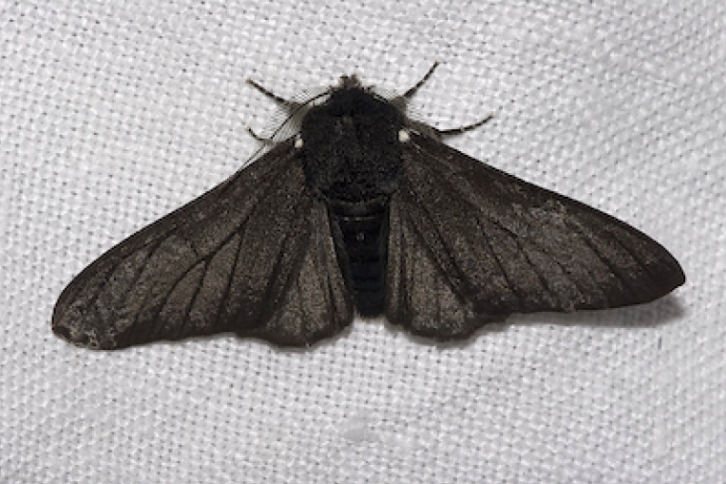
The most famous example of mismatched colors first came to light in the 1950s. Coal smoke had darkened England’s trees, so that light pepper moths, once blended nicely against bark, now stood out against the smudgy background. A dark form of peppered moths, once rare, became common. Researchers suspected that natural selection was the reason why, and they tested that idea by putting dark and light moth models on trees. Birds quickly attacked the mismatched ones, as had been predicted.
The photos from these experiments became a staple of textbooks. But doubts arose about the research. Real peppered moths often don’t sit on tree trunks with wings extended, for example. Creationists called the whole phenomenon a fraud and a reason to question evolution itself.
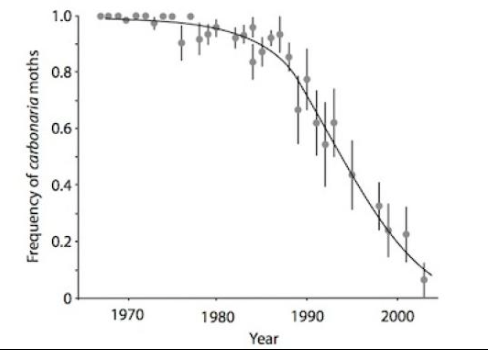
But the evidence in favor of natural selection on peppered moths continued to accumulate. For one thing, Britain and other countries cleaned up their air in the late 1900s, and trees went from dark to light. Now natural selection’s balance shifted: black became a liability. And, as you’d predict, the dark moths went from common back to rare again.
To see if predators were the instrument of their disappearance, biologist Michael Majerus launched a massive study in 2001. He died before he could publish the experiment; it only came out last year, completed by some of his fellow scientists, in Biology Letters. (It’s free to read.)
Majerus released 4864 moths, some dark and some light, and then observed how they landed on trees and how likely they were to escape being eaten by birds. Each day, he found, dark moths were nine percent less likely to survive. Since the moths only live for a few days in the wild anyway, that difference was enough to quickly drive dark moths from common to rare if they didn’t match their background.
The story of the peppered moth is striking, but it’s also a story of civilization. As we humans developed different ways of producing energy–first dirty, then clean–we altered the environment in which animals evolve. Their colors tracked our history. The story of the peppered moth still leaves us to wonder about the evolution of color in the natural world, beyond the dark Satanic mills.
Thousands of miles away from England’s peppered moths, a species of walking stick insects called Timema cristinae lives in the hills of southern California. A new study shows that they feel the pressure of evolution on their color, too. In fact, the evolution of color is so powerful that it doesn’t just affect the walking sticks. It affects the diversity of their entire ecosystem.
The new study, carried out by Patrik Nosil of the University of Sheffield and his colleagues, took place in the hills outside of Santa Barbara. When the scientists beat the bushes in those hills, they find Timema cristinae insects with two color patterns. Some are solid green, while others have white stripes running up their bodies. Depending on the bush they inspect, they may find mostly green bugs, mostly striped ones, or a mix of the two.
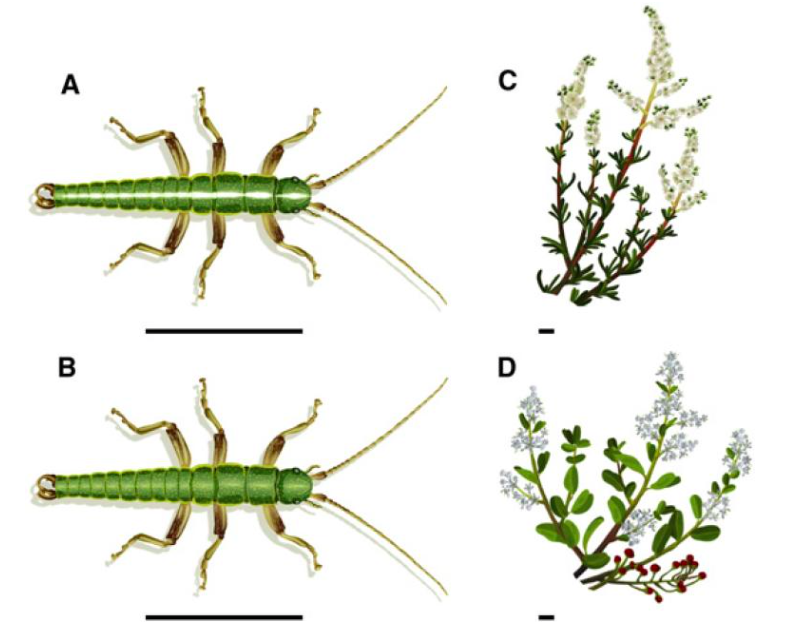
It’s no surprise that they can find a mix of the insects. Walking sticks don’t have wings, so they live mostly on a single bush their whole life. But when a new generation of walking sticks emerges, some of the insects will disperse to a different bush.
But why are there two such different forms in the same species? The ecologist Cristina Sandoval first recognized that the answer had to do with the bushes that the walking sticks live on. Each pattern may do a good job of protecting a walking stick from birds–just as long as it is living on the right bush.
One species of bush that the insects live on has thick green leaves. A solid green walking stick blends right in with that foliage. Another species of bush grows needle-like leaves. The white stripes on some walking sticks divides into green strips, making them look like thin leaves.
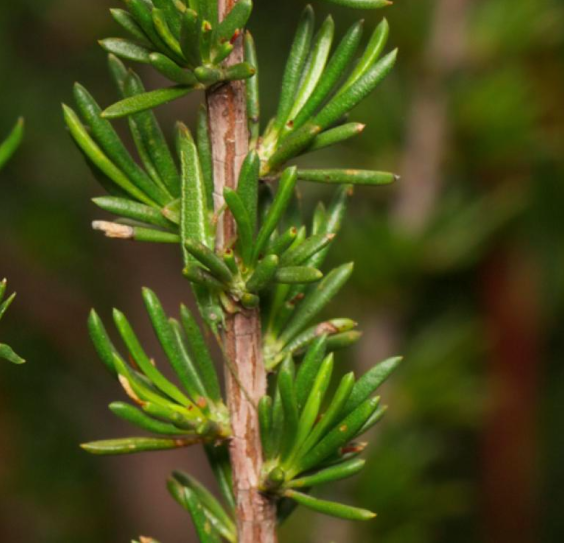
If the walking sticks get on the wrong bush, however, they lose their disguise. Against the thin leaves, the solid green insects leap out. Against the big leaves, the pale stripe of the other walking sticks looks out of place.
Nosil and his colleagues have been studying how these different kinds of camouflage play out in the California hills. A map of the insects and the bushes bears out this idea. In places where there are lots of thick-leaves bushes, the walking sticks are mostly solid green. In places where the thin-leaved bushes dominate, most of the insects have a white stripe. But if a thick-leafed bush is surrounded by thin-leaved ones, it will have many mismatched insects. That’s a pattern you’d expect from the combination of bird-driven natural selection and insects moving among neighboring bushes.
To put this idea to a thorough test, Nosil, his student Tim Farkas, and their colleagues studied 186 bushes in the California hills. They caught every walking stick insect on the bushes to do a population census. They found that when the insects were well-matched to the bush, their numbers were high. When they were badly matched, the population was much lower. That pattern makes sense if the birds are picking off the insects that are standing out against the bushes.
Nosil and his colleagues then altered the populations of walking sticks on each bush. To some bushes, they added 200 well-matched insects. To others, they added 200 mismatched ones. They waited a month–during which time the insects fed on the bushes and birds fed on the insects–and then returned to see how things had gone.
On the bushes with mismatched insects, the populations were half what Nosil found on the bushes with the well-matched ones. Birds presumably swooped in and feasted on the easy-to-spot walking sticks.
But the effects did not stop there. Instead, they rippled out to other species. Nosil and his colleagues didn’t just count up the walking sticks on the bushes–they also tallied the caterpillars, spiders and other invertebrates. And they found a stark change in their numbers too. On the bushes with mismatched walking sticks, the other species dropped by half as well.
Not only did the numbers go down for all the species, but some species disappeared altogether from bushes. On bushes with extra camouflaged walking sticks, on the other hand, other species thrived.
Nosil and his colleagues also found that they altered the bushes themselves with the experiment. Walking sticks chew on leaves, and so it stands to reason that bushes with fewer walking sticks ended up getting chewed less. But the scientists wondered how much damage the plants suffered from other insects, which pierce or suck the plants instead of chewing them. They found that bushes full of mismatched walking sticks suffered less of this kind of damage, too. In other words, the bushes benefited from mismatched walking sticks because they wiped out all the species feeding on them.
It was surprising that getting rid of walking sticks would also lead to the devastation of other species. The disappearance of walking sticks could have led to an increase in other animals, because there would be less competition for food. To understand why this was’t happening, Nosil repeated the experiment all over again, but with a twist. He and his colleagues put chicken wire over some bushes so that birds couldn’t get to them.
On the bushes that were left unprotected, the scientists found the same result: walking sticks and other species were wiped out when the walking sticks were mismatched, and the bushes benefited. But the chicken wire wiped out those results on the enclosed bushes. There was no difference between bushes with mismatched and well-matched walking sticks.
That experiment established that it’s the birds that are responsible for all the effects the scientists had seen. They were attracted to the mismatched walking sticks, because walking sticks are so abundant on the bushes. And then stayed on the bushes to feast on the other prey. When the birds cleaned off all the animals from the bushes, they protected the bushes.
Adding extra walking sticks to bushes mirrors the different combinations of walking insects you can find in nature. Nosil argues that as evolution acts on the walking sticks, it shapes the diversity of other species in the hills of California. Â To understand why there are a given number of species in one place, scientists may need to understand the rapid evolution going on there. The power of color evolution, it appears, reaches far beyond our eye.
[10/10: A few corrections, including name-checking Sandoval]